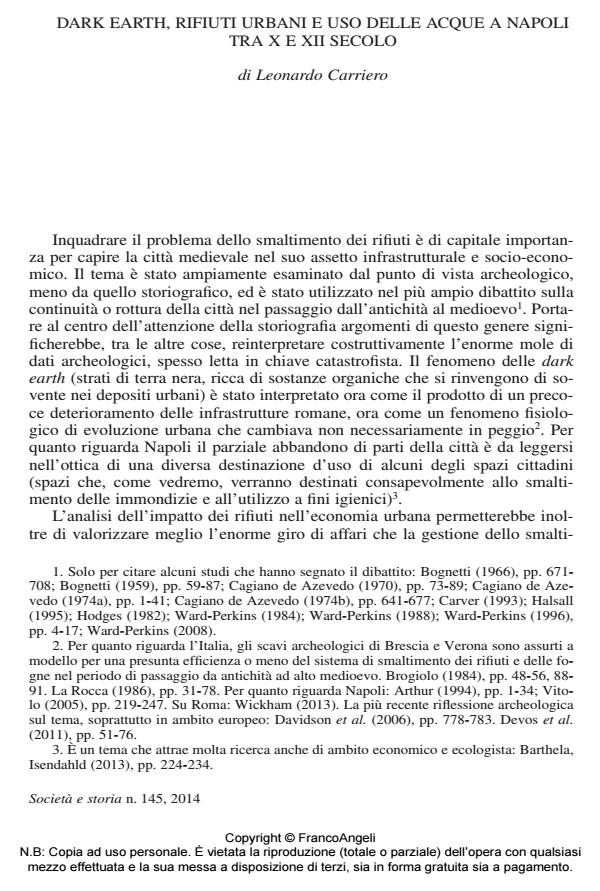Dark Earth, urban refuse and the uses of waters in medieval Naples
Journal title SOCIETÀ E STORIA
Author/s Leonardo Carriero
Publishing Year 2015 Issue 2014/145
Language Italian Pages 26 P. 433-458 File size 584 KB
DOI 10.3280/SS2014-145001
DOI is like a bar code for intellectual property: to have more infomation
click here
Below, you can see the article first page
If you want to buy this article in PDF format, you can do it, following the instructions to buy download credits

FrancoAngeli is member of Publishers International Linking Association, Inc (PILA), a not-for-profit association which run the CrossRef service enabling links to and from online scholarly content.
The city of Naples between the tenth and the twelfth century is characterized by infrastructural complexity. The late Roman sewage system remained in use in the following centuries and was supplemented by new structures, designed to connect peripheral areas to the cloaca maxima. New kinds of services were built by private enterprise alongside public baths and diaconiae. Outhouses (latrinae) located in empty areas of the city became an important part of the urban network. The accumulation and disposal of urban waste were controlled by public authorities by means capable of solving the problems posed by the economic and commercial growth of the city.
Keywords: Medieval water system; medieval drain system; baths in the Middle Ages; medieval latrin; Middle Ages garbage disposal; medieval Naples.
- Quarant'anni di medioevo sulle pagine di «Società e storia»: 1978-2019 Paolo Grillo, in SOCIETÀ E STORIA 178/2023 pp.697
DOI: 10.3280/SS2022-178004
Leonardo Carriero, Dark earth, rifiuti urbani e uso delle acque a Napoli tra x e XII secolo in "SOCIETÀ E STORIA " 145/2014, pp 433-458, DOI: 10.3280/SS2014-145001